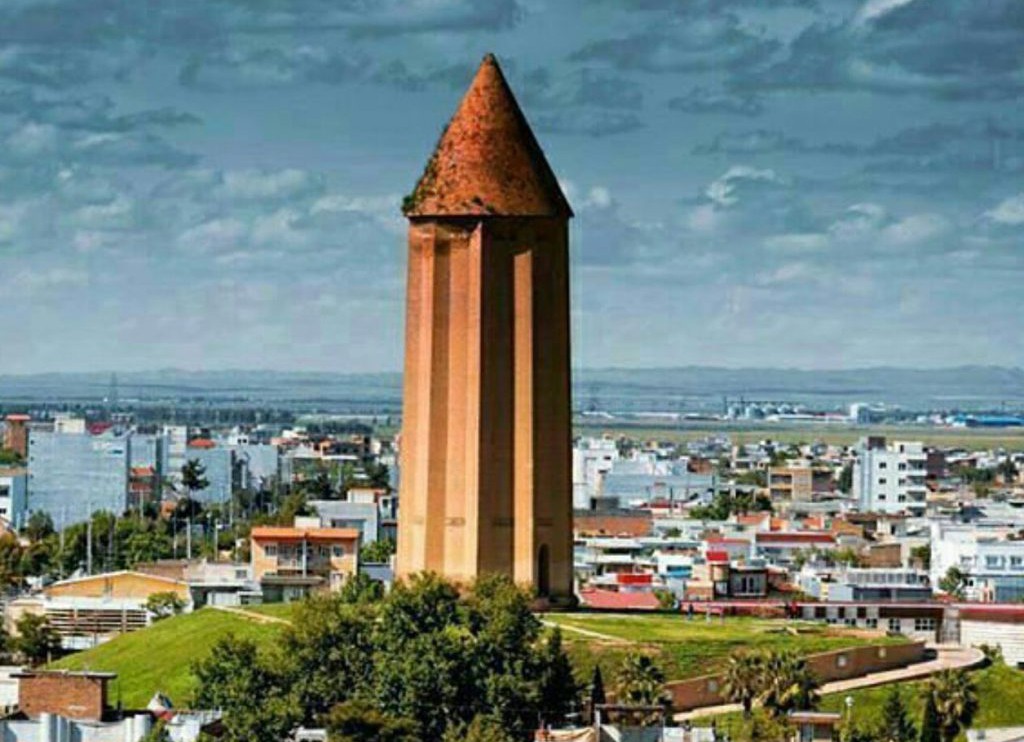Gonbad-e Kavus (Persian: Gonbade Kāwus; Turkmen: Kümmet Gowuz) is the Iranian city known historically as Gorgan/Hyrcania. The modern name, meaning “the tower of Kavus”, is a reference to the most imposing ancient monument in the city. The historic name cannot now be restored, as it was oddly and carelessly assigned to the neighboring historical city of Astarabad in the 1930s by the Iranian government. At one point, it was even known as the city of Dashte Gorgan, meaning “the Plains of Gorgan”.
It is the capital of Gonbad-e Kavus County, in the province of Golestān in the northeast of Iran. At the 2006 census, its population was 127,167, in 30,710 families.
In the historical times, the city’s populations were made up of various Iranic peoples such as the ancient and eponymous Hyrcanians, Parthians and eventually the Khurasani Persians. Today, however, there are no reliable figures for the ethnic make of the city. However, it is agreed that the city has a plurality of its inhabitants being ethnic Turkmen, Turkmen who speak a western Turkmen language,. The remaining population are made Khorasani Turks, Sistanis, Baluch , Mazandaranis as well as Persians and other smaller Iranic peoples.
The city is famous for its historic brick tower of the same name. Iranian footballer Sardar Azmoun is from this city.
Historical attractions
The “Divar-i Iskandar” (Persian for the “Wall of Alexander”) or Qizil Alan (Turkmeni for “Red Snake”) is a gigantic defensive wall built in the Sasanian period of Iranian history. The visible remains are about 155 km (96 mi) long and 6–10 m (20–33 ft) wide. It is one of the most outstanding and gigantic architectural monuments in northeast Iran and the most impressive in the Golestan Province.iran tour This wall, which is the largest defensive wall in the world after the Great Wall of China, starts from the Caspian sea coast, circles north of the city of Gonbad-e Kāvus, continues towards the northeast, and vanishes into the Pishkamar Mountains.
At certain points, the Divar is 6 m (20 ft) wide and in other parts the width is 10 m (33 ft), depending on the nature of the land and the soil type. Watch towers and forts had been built at different distances. The longest distance between forts is 50 km (31 mi) and the shortest is 10 km (6.2 mi). The 40 identified forts vary in dimension and shape but the majority are square fortresses. Due to many difficulties in development and agricultural projects, archaeologists have been assigned to mark the boundary of the historical find by laying cement blocks.
The Divar defensive wall has also been known variously as Alexander Dam, Anushirvân Dam, Firuz Dam and Golestan’s Defense Wall in various historical texts.
Dr. Kiani, who led the archaeological team in 1971, believes that the wall was built during the Parthian dynasty, simultaneously with the construction of the Great Wall of China, and that it was restored during the Sassanid era (3rd to 7th centuries AD).

Comment (0)